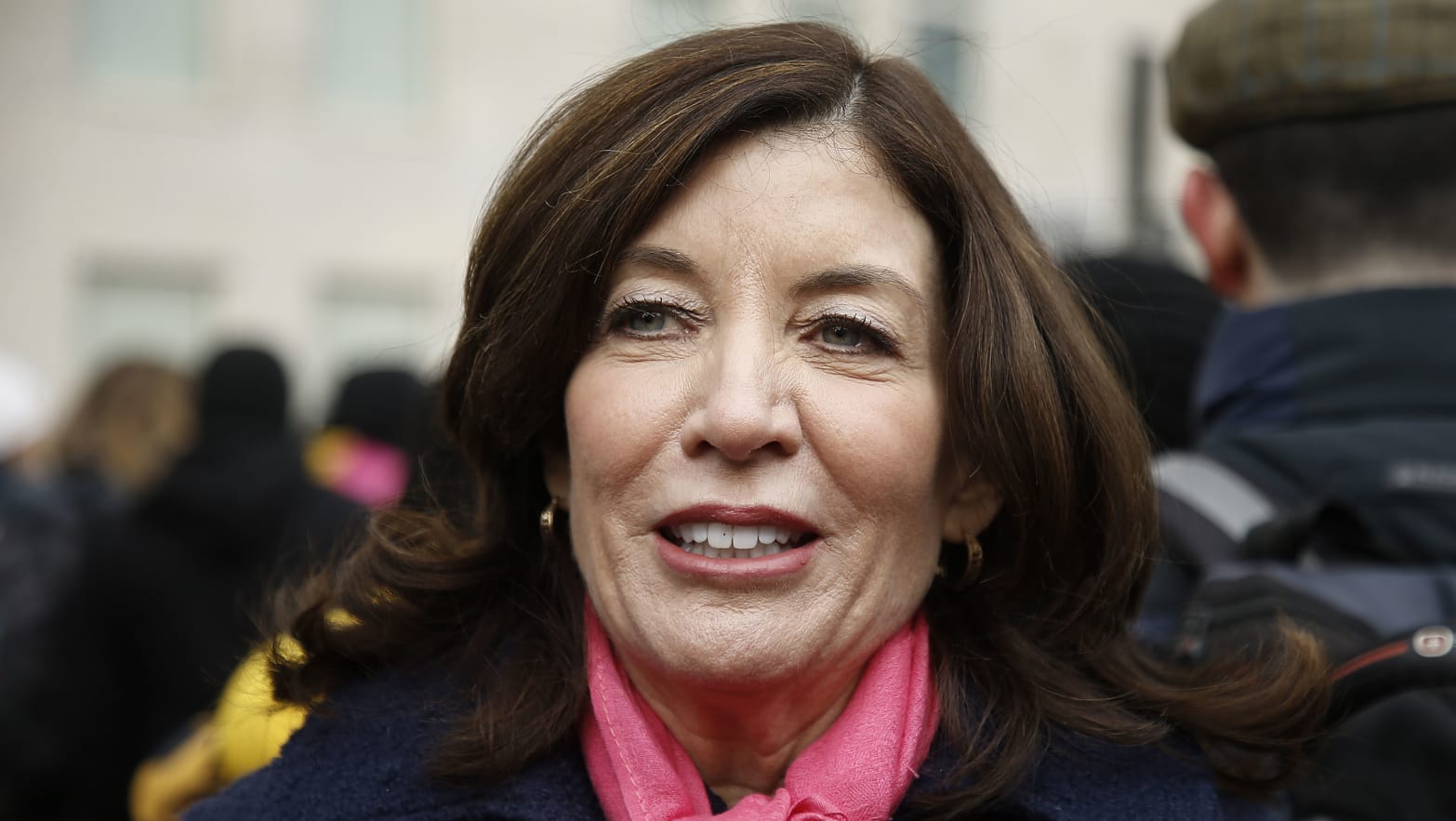Tensions with evangelicals threaten Trump White House bid

Julia Manchester
Sat, January 21, 2023
Tensions between Donald Trump and evangelical leaders have spilled into public view, posing a potential threat to the former president’s election chances in 2024.
In an interview earlier this week, Trump said evangelical leaders are showing “signs of disloyalty” because they have yet to endorse his third presidential bid.
The comments highlighted the changing dynamic in GOP politics as the leaders of one of Trump’s most supportive demographics appear to distance themselves from the former president.
“It’s going to make these next few months uncomfortable for evangelical leaders because they’re going to have to, in essence, answer that question: Are you for Trump or are you not?” said David Brody, the chief political analyst at the Christian Broadcasting Network, who conducted the interview with Trump.
Trump’s comments come after influential evangelical pastor Robert Jeffress interviewed former Vice President Mike Pence, who is also evangelical, on stage at First Baptist Church in Dallas last week.
Pence is a potential 2024 Trump rival and Jeffress is a longtime supporter of Trump but has notably held off on endorsing him ahead of next year’s presidential election.
But in an interview with The Hill on Friday, Jeffress said he believes the former president will be the GOP presidential nominee in 2024 and that his decision to hold off on endorsing the president is “just a matter of timing.”
“I just don’t see a need to make an official endorsement two years out,” Jeffress said.
“Just let me cut to the chase,” he said. “I think President Trump is the presumptive nominee for 2024. I expect he will be the nominee in 2024 and I believe he’ll be the next president of the United States.”
However, Jeffress said that if Pence decides to run in 2024 he will be “a strong contender.”
White, evangelical Protestants played a key role in Trump’s coalition in 2016 and 2020 and have historically been a loyal Republican voting bloc. According to Pew Research, 84 percent of white, evangelical Protestants voted for Trump in 2020, while 77 percent voted for him in 2016.
The conservative voting bloc was drawn to Trump for his stances on issues like abortion and immigration. Trump, who appointed three conservative Supreme Court justices, has largely been credited for setting in motion the overturning of Roe v. Wade — one of his key campaign promises.
“He’s very much action-oriented and so therefore if he made promises and he delivered on those promises, which he did for four years, he’s going to say ‘well, what’s the problem here?’” Brody said.
While notable group leaders are choosing to wait to endorse the former president — despite him delivering on those promises — many are now wondering if it’s a signal that Trump’s support is softening among evangelicals ahead of the 2024 Republican primary.
“I think Trump is not helping himself here,” said Robert Jones, founder of the nonpartisan Public Religion Research Institute. “Trump did not really gain the votes of white evangelicals through white evangelical leaders in 2016.”
Jeffress publicly broke with Russell Moore, the-then president of the Southern Baptist Convention’s Ethics and Religious Liberty Commission, over Trump in 2016. Moore has been a vocal critic of the then-GOP candidate, while Jeffress embraced him.
“If you had just listened to evangelical leaders, you would have thought there was a great divide in the evangelical community on this,” Jones continued. “Of course when it came time to vote in primaries, the rank and file of white evangelicals lined up quite handily behind Trump.”
“There was never a divide on the ground in the way there was among evangelical leaders,” he said. “I think Trump himself may misunderstand the dynamics that evangelicals were never waiting on their leaders to tell them who to vote for.”
Brody said that broadly evangelical leaders and voters also have not been turned off by the controversies that have dogged Trump for decades, arguing that they always knew what they were signing up for.
“If chaos was there before — and it was — and chaos was here now, what has changed? Nothing has changed,” Brody said.
There is a trend in some early polls showing Trump’s support wavering among Republican voters as Florida Gov. Ron DeSantis (R) gains traction. Forty-nine percent of Republican primary voters said they would support the former president in 2024 and 54 percent of evangelical voters said they planned on supporting him in his third bid, according to a New York Times-Sienna College poll released in October ahead of the midterm elections.
However, polling this week showed Trump running ahead of DeSantis. A new Harvard CAPS-Harris Poll survey released on Friday showed Trump leading DeSantis 48 percent to 28 percent. Meanwhile, a Morning Consult poll released on Wednesday showed Trump leading DeSantis 48 percent to 31 percent.
But if multiple Republican contenders jump into the primary, which is likely to happen, evangelical support could be divvied up.
“Evangelicals are going to have a decision to make and Trump will probably end up losing some of that support,” Brody said.
And experts say they doubt that Trump’s support among evangelical voters themselves will suffer drastically anytime soon.
“When you look at Trump’s favorability numbers, they have moved down a bit since he was in office among white evangelicals but not very much,” Jones said. “To me, unless the numbers look significantly worse than they did in 2016 for him, I would not count him out, and they do not.”




















